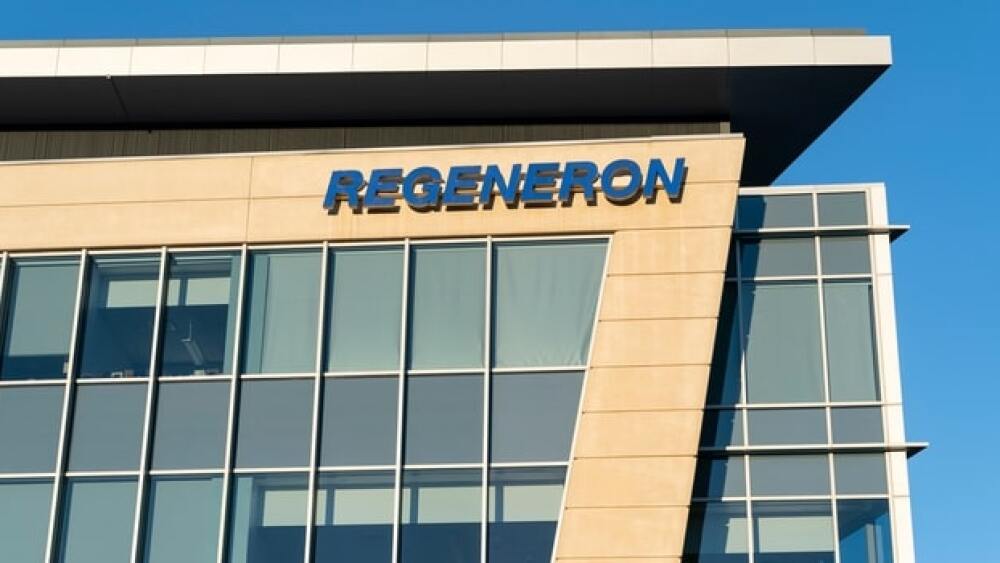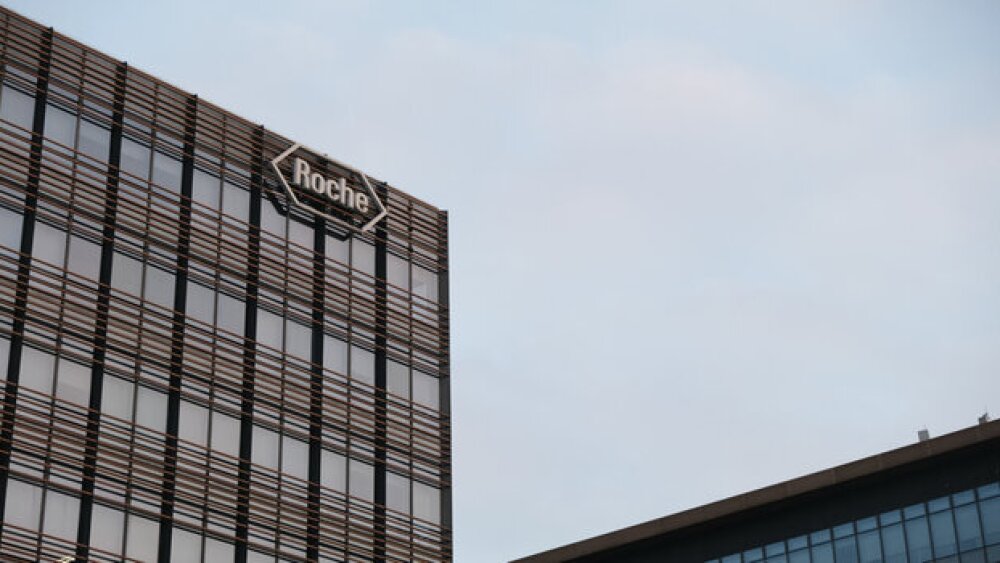Citing issues with a third-party contractor, the FDA rejected Regeneron’s regulatory application for a higher-dose regimen of Eylea, the company’s blockbuster eye injection treatment.
Pictured: Regeneron logo on a light brown building/Shutterstock, Lev Radin
Tuesday, the FDA rejected Regeneron’s application to have a higher 8-mg dose of its blockbuster medicine Eylea (aflibercept) approved for patients with wet age-related macular degeneration, diabetic macular edema and diabetic retinopathy.
In its Complete Response Letter, the regulator flagged issues with its “ongoing review of inspection findings at a third-party filler,” according to Regeneron’s press announcement. The FDA did not find problems with efficacy and safety data, nor with trial design, labeling or drug manufacturing.
The agency is also not requesting additional clinical data and has not indicated that it will require the company to run more studies for the proposed higher-dose regimen of Eylea.
Regeneron will work with the FDA and the third-party contractor in question to resolve the regulator’s questions.
Company shares dropped 8% following the rejection.
Eylea is a recombinant fusion protein designed to be injected directly into the eye. The treatment works by targeting and blocking two growth factors—VEGF-A and PLGF—thereby preventing the growth and development of new and abnormal blood vessels in the eye. When left unchecked, these blood vessels can lead to complications such as hemorrhage, glaucoma and a detached retina.
Eylea was first approved in November 2011 for the treatment of wet age-related macular degeneration (wAMD) in adults. The eye injection picked up its other indications in the years that followed, including diabetic macular edema (DME) in July 2014, macular edema after retinal vein occlusion in October 2014 and diabetic retinopathy (DR) in May 2019.
Currently, however, Eylea is only authorized as a 2-mg dose. In wAMD patients, it is given once every four weeks for the first three months, after which the injection is given once every eight weeks. In DME and DR, Eylea’s monthly dosing lasts for the first five injections, after which treatment frequency also drops to once every eight weeks.
In Regeneron’s Biologics License Application for the higher-dose regimen, the company was seeking to space out injections and administer Eylea at 12-week or 16-week intervals. Data from two pivotal studies—PULSAR in wAMD and PHOTON in DME—showed that at both dosing frequencies, Eylea induced non-inferior vision gains as compared to the 8-week schedule.
The 12- and 16-week dosing schedules were also easy to maintain for the patients and had safety profiles consistent with what had been documented with the lower-dose Eylea regimen. There were no documented cases of retinal vasculitis, endophthalmitis and occlusive retinitis in either PHOTON or PULSAR.
Tristan Manalac is an independent science writer based in metro Manila, Philippines. He can be reached at tristan@tristanmanalac.com or tristan.manalac@biospace.com.






